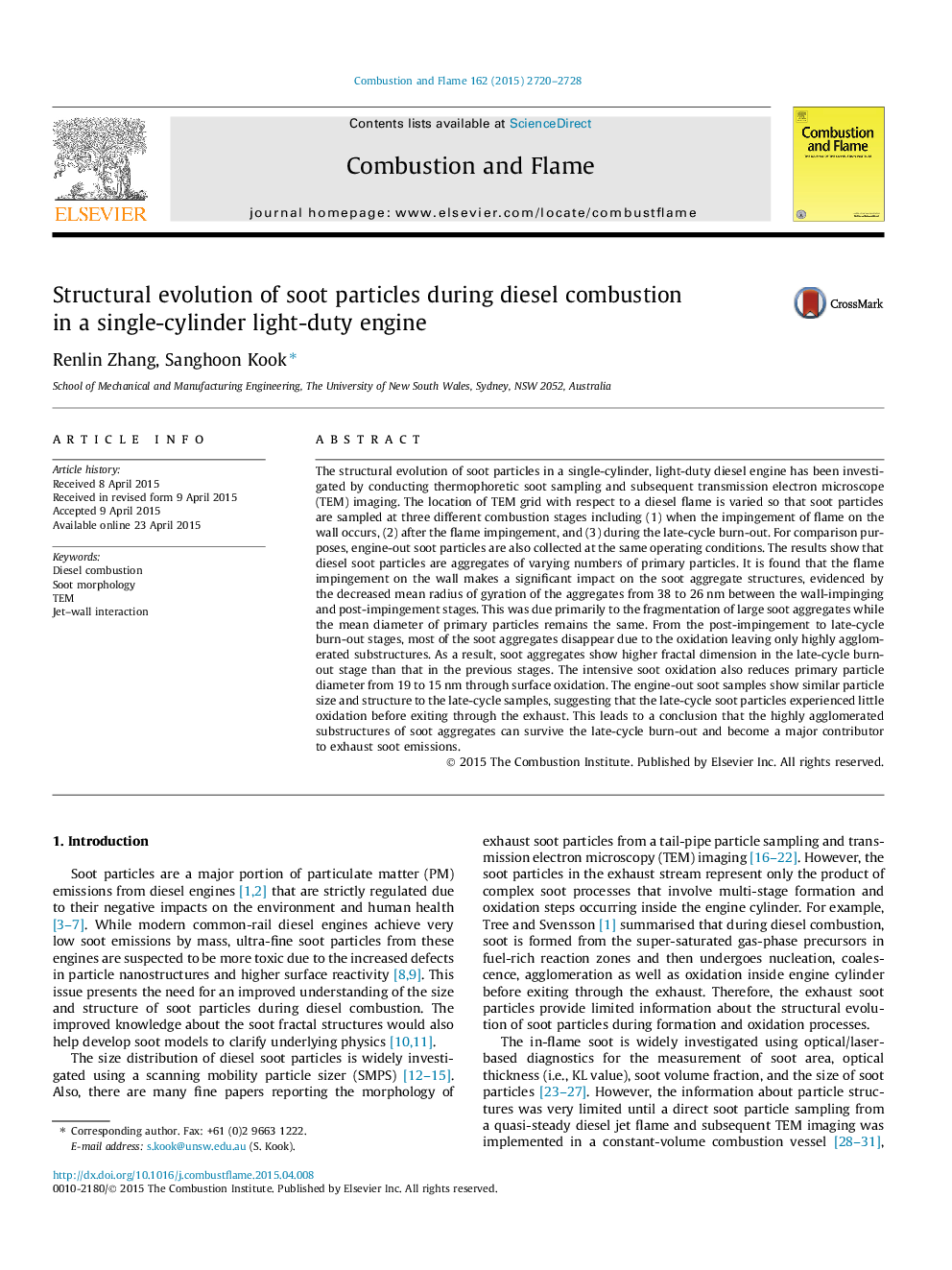| کد مقاله | کد نشریه | سال انتشار | مقاله انگلیسی | نسخه تمام متن |
|---|---|---|---|---|
| 166301 | 457751 | 2015 | 9 صفحه PDF | دانلود رایگان |
The structural evolution of soot particles in a single-cylinder, light-duty diesel engine has been investigated by conducting thermophoretic soot sampling and subsequent transmission electron microscope (TEM) imaging. The location of TEM grid with respect to a diesel flame is varied so that soot particles are sampled at three different combustion stages including (1) when the impingement of flame on the wall occurs, (2) after the flame impingement, and (3) during the late-cycle burn-out. For comparison purposes, engine-out soot particles are also collected at the same operating conditions. The results show that diesel soot particles are aggregates of varying numbers of primary particles. It is found that the flame impingement on the wall makes a significant impact on the soot aggregate structures, evidenced by the decreased mean radius of gyration of the aggregates from 38 to 26 nm between the wall-impinging and post-impingement stages. This was due primarily to the fragmentation of large soot aggregates while the mean diameter of primary particles remains the same. From the post-impingement to late-cycle burn-out stages, most of the soot aggregates disappear due to the oxidation leaving only highly agglomerated substructures. As a result, soot aggregates show higher fractal dimension in the late-cycle burn-out stage than that in the previous stages. The intensive soot oxidation also reduces primary particle diameter from 19 to 15 nm through surface oxidation. The engine-out soot samples show similar particle size and structure to the late-cycle samples, suggesting that the late-cycle soot particles experienced little oxidation before exiting through the exhaust. This leads to a conclusion that the highly agglomerated substructures of soot aggregates can survive the late-cycle burn-out and become a major contributor to exhaust soot emissions.
Journal: Combustion and Flame - Volume 162, Issue 6, June 2015, Pages 2720–2728
